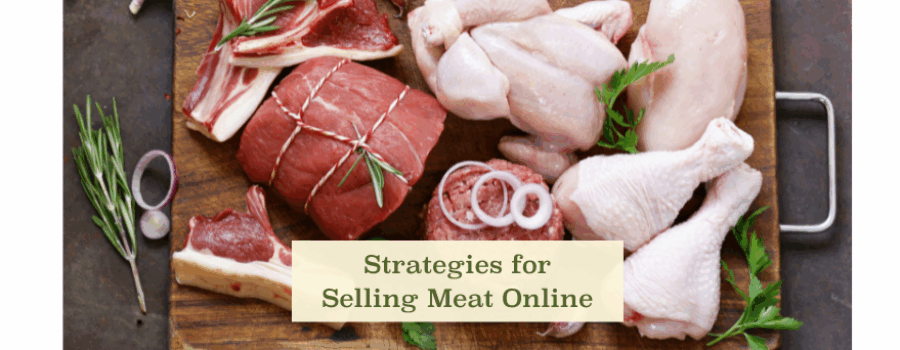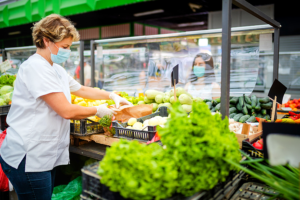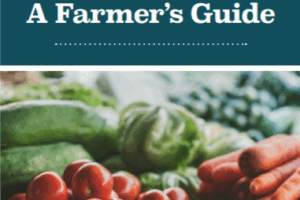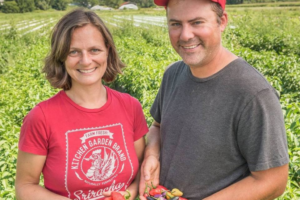 High Country Food Hub in Boone, North Carolina, was founded in 2016 by the Blue Ridge Women in Agriculture to support local food producers through product storage, aggregation, and distribution. The organization operates as an online farmers market and has been powered by Local Food Marketplace since 2017. It sells directly to consumers, who pick up their orders at one of five locations. Though the hub’s storefront lists upward of 3,000 products from more than 100 producers, meat has always been a focus. That’s why we turned to them for tips on successfully selling meat online.
High Country Food Hub in Boone, North Carolina, was founded in 2016 by the Blue Ridge Women in Agriculture to support local food producers through product storage, aggregation, and distribution. The organization operates as an online farmers market and has been powered by Local Food Marketplace since 2017. It sells directly to consumers, who pick up their orders at one of five locations. Though the hub’s storefront lists upward of 3,000 products from more than 100 producers, meat has always been a focus. That’s why we turned to them for tips on successfully selling meat online.
High Country Gets Its Start with Meat Sales
When High Country Food Hub opened, one of its first acts was purchasing a freezer to help local farmers increase their meat storage capacity. Demand was so high that within a couple years, it added a second freezer and then a third freezer when additional space within the shared agricultural facility was made available to the hub.
“During COVID, when you could not find ground beef in the grocery store, people around here found out we had freezers full of meat and started buying from us,” said Shannon Carroll, the hub’s Finance Coordinator. Many shoppers enjoyed the higher quality of the meat they could buy from local producers and became loyal customers.
Laney Baker, Producer Programs Coordinator, added that shoppers really appreciate the “place-based” aspect of the hub’s beef, chicken, pork, lamb, and other meat products. “The rising prices of meat in the grocery store, paired with the issues around recalls and industrial farming practices, means buying local meat is important to people,” she said.
Interested in learning more strategies for selling meat online? Attend our free webinar!
Register for the Webinar
Top Strategies for Selling Meat Online
If you are looking for ways to increase meat sales online, High Country Food Hub shared four steps to consider.
Establish Ways for Shoppers to Meet Producers
Food hub customers love the convenience of shopping through the online storefront, but they also enjoy meeting the people who are producing their meat. To facilitate this, High Country Food Hub allows producers to table during its main pickup events on Wednesdays. “Sometimes they’ll come with their Crock Pot with some kind of meat dish and have samples available for folks to try,” said Laney. Other times, they’re simply there to answer questions about their farm, animal management practices, and favorite ways to prepare different cuts.
High Country Food Hub also hosts a popular local meat sale once a year. Four to six producers typically participate and sell their products at a discounted rate. (To achieve the “discount,” the hub doesn’t require customers to pay the typical margin required for online sales.)
In addition to good deals, High Country does a raffle, arranges cooking demonstrations, and plans other activities to make it a fun experience for people. “It’s a great way for our customers to interact with our producers in a more market-style environment,” said Shannon. “It encourages them to continue buying meat from that producer throughout the rest of the year once they’ve been able to interact with them in person.”
Share Recipes
High Country Food Hub frequently shares a recipe requiring meat in its newsletter. Sometimes the recipes come from producers; sometimes they are developed by the food hub’s social media manager. Recipes are accompanied by a photo to entice customers to try it.

High Country uses LFM’s List Builder feature to compile a list of all producers who sell the cut of meat needed to make the recipe. The link is prominently featured in the newsletter. That makes it easy for people to shop for what they need — and avoids promoting one producer over another.
The hub encourages customers who try a recipe to snap a photo and share it on social media. The social media manager then shares those photos through Instagram Stories and tags the customer.
Get more ideas for increasing meat sales with “A Meat Vendor’s Guide to Online Sales.”
Download the GuideUtilize Variable Weight Functionality
High Country Food Hub trains its producers to use one of LFM’s top resources for meat sellers: the variable weight function. Sellers list meat within a weight range (see example below) when they post it on the storefront. When the meat producer delivers their order or the Food Hub staff collects it from storage in the freezers on aggregation day, the invoice is quickly updated by the staff with the exact weight and price of the roast, whole chicken, or package of sausages.

“We train our producers to use the highest end of the weight range for the weight field so the highest price that could be charged is displayed for customers,” said Laney. This prevents any unpleasant surprises for the customer when they receive their invoice. In fact, they’re typically happy to see their order total is lower than they expected.
The potential for an updated price is clearly communicated to customers on the storefront. “When a customer adds a meat item to their order, they are prompted with a message saying the final price will be updated with the exact weight,” said Laney. The storefront also shows the per-pound price so shoppers know what they’re paying.
Allow Customers to Save Favorites
The main page of the storefront includes a callout box encouraging customers to “Save Time: Reorder What You Love.” Clicking the box takes them to a list of products they’re recently ordered so they get a quick reminder of meat and other items they might want to purchase again.
Customers can also save any item on the storefront as a “favorite” to have it automatically populate to their personalized My Favorites page. “It’s great for someone who wants to make biscuits and gravy every weekend,” shared Shannon, or for any products customers like to buy on a regular basis.
Get More Strategies for Selling Meat Online at Our Webinar
Are you looking for more ways to increase meat sales online? Join LFM and High Country Food Hub on Thursday, June 12 at 11 a.m. PT for a free webinar, “Strategies for Selling Meat Online.” We’ll cover:
**How using LFM’s variable weight feature makes it easy to sell and ensures you get paid for exactly what you sell.
**How tools like the LFM List Builder can help farms sell more products.
**How to incorporate meat into bundles and subscriptions.
**Important elements for successful sales — photos, descriptions, recipes, and more!
**Using the online store to communicate expected total price, price per pound, and size options.
**Using the online storefront to educate consumers about differentiating quality and attributes.
**How to hold an annual (or semi-annual) fill your freezer sale to promote meat producers.






Leave a Reply
Your email is safe with us.